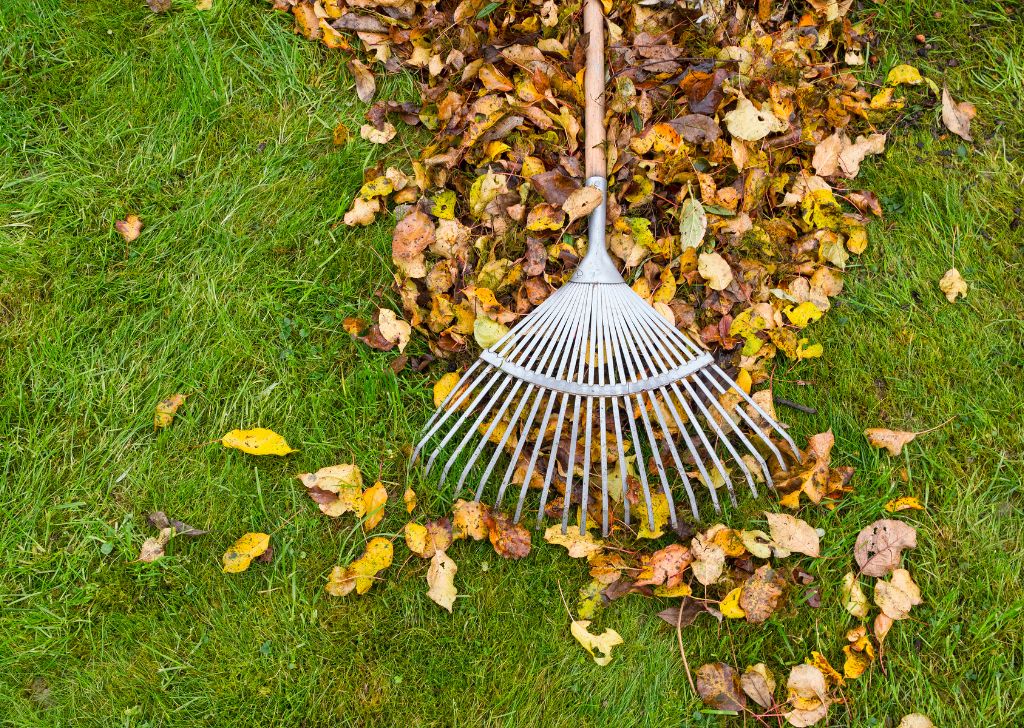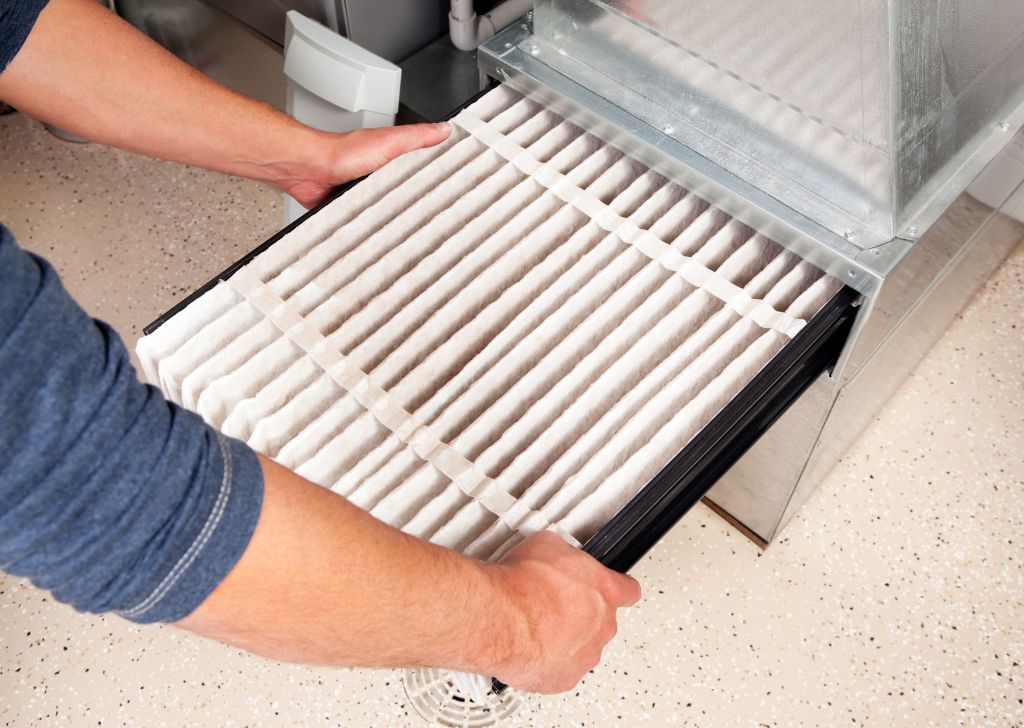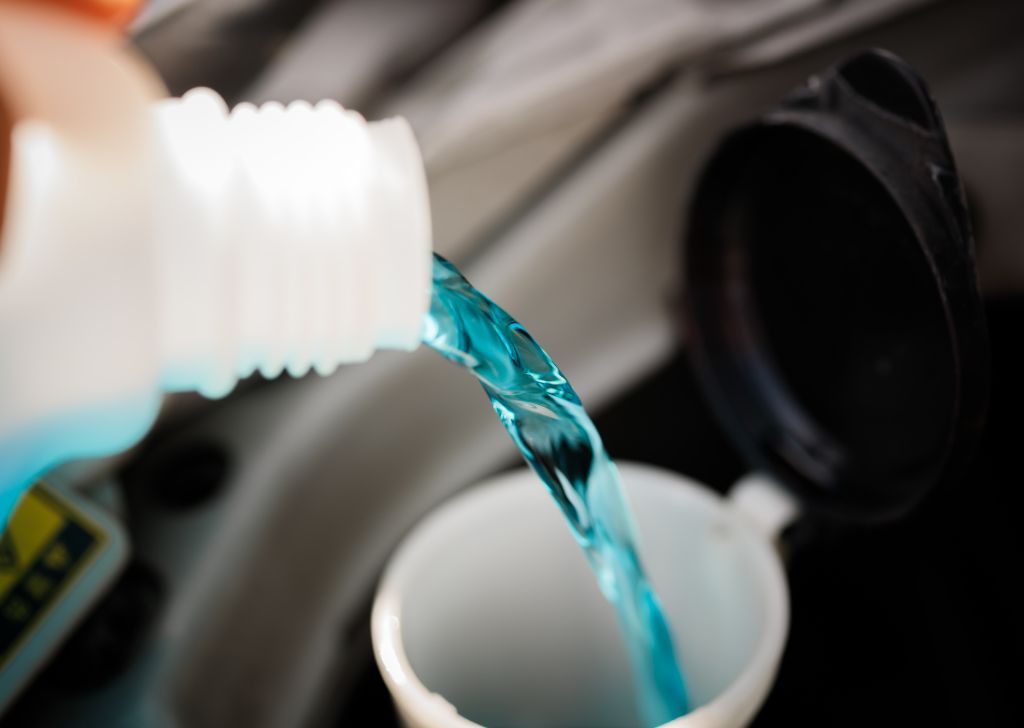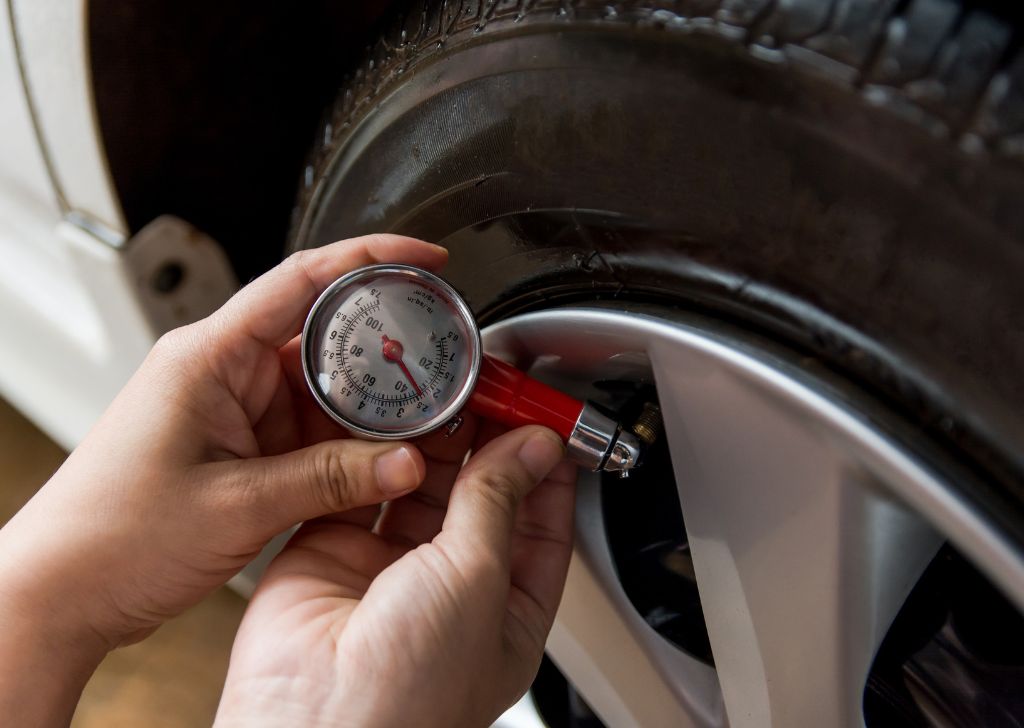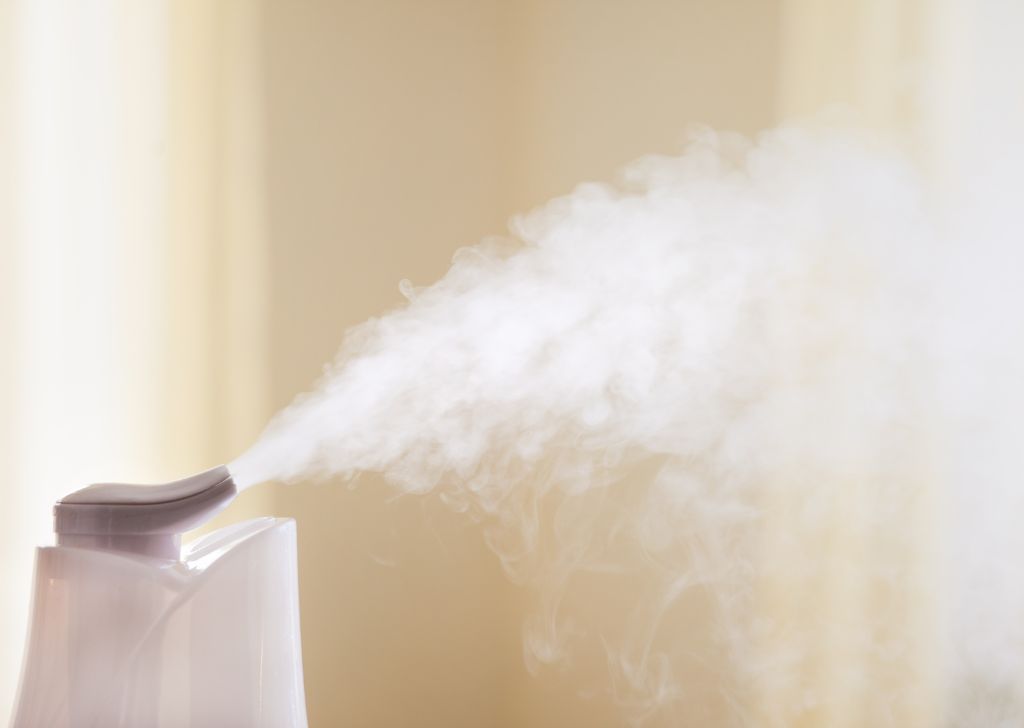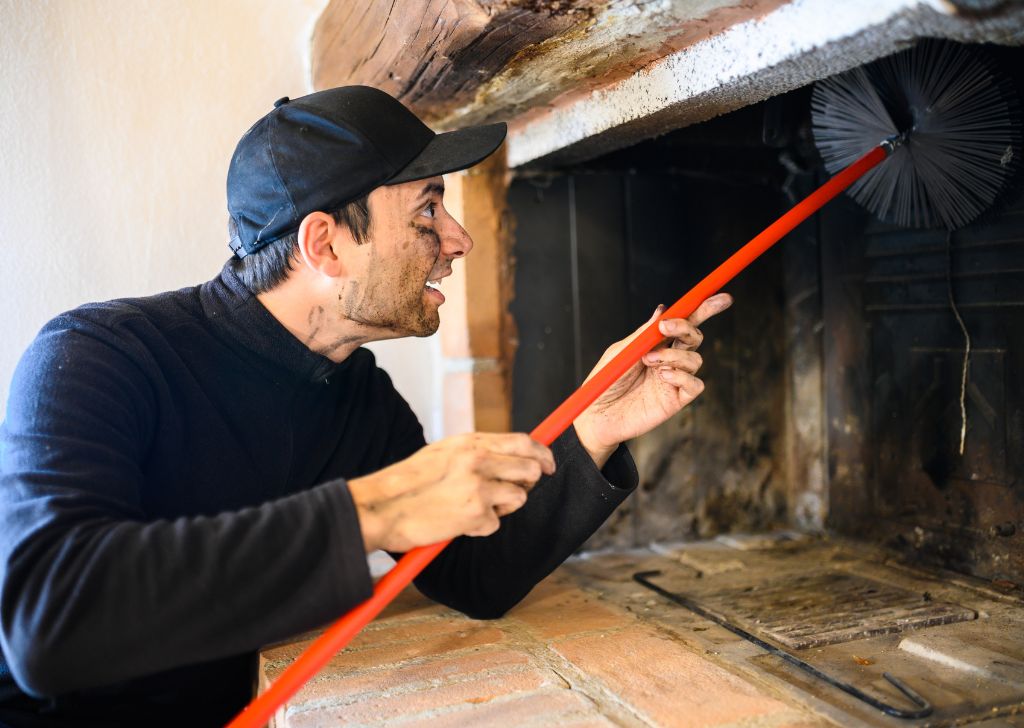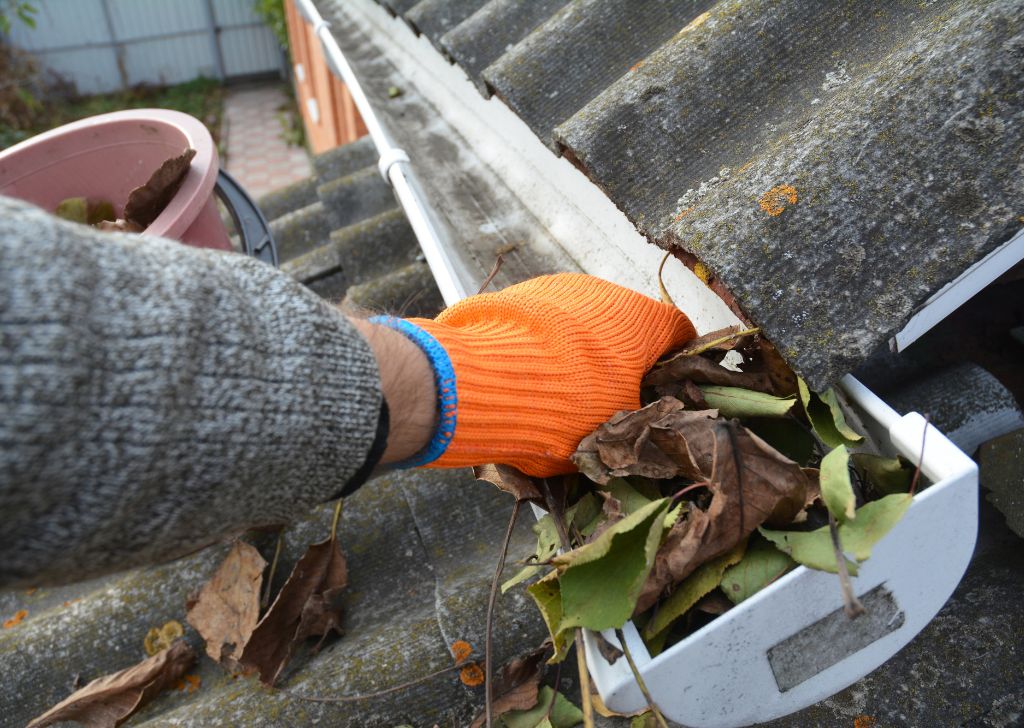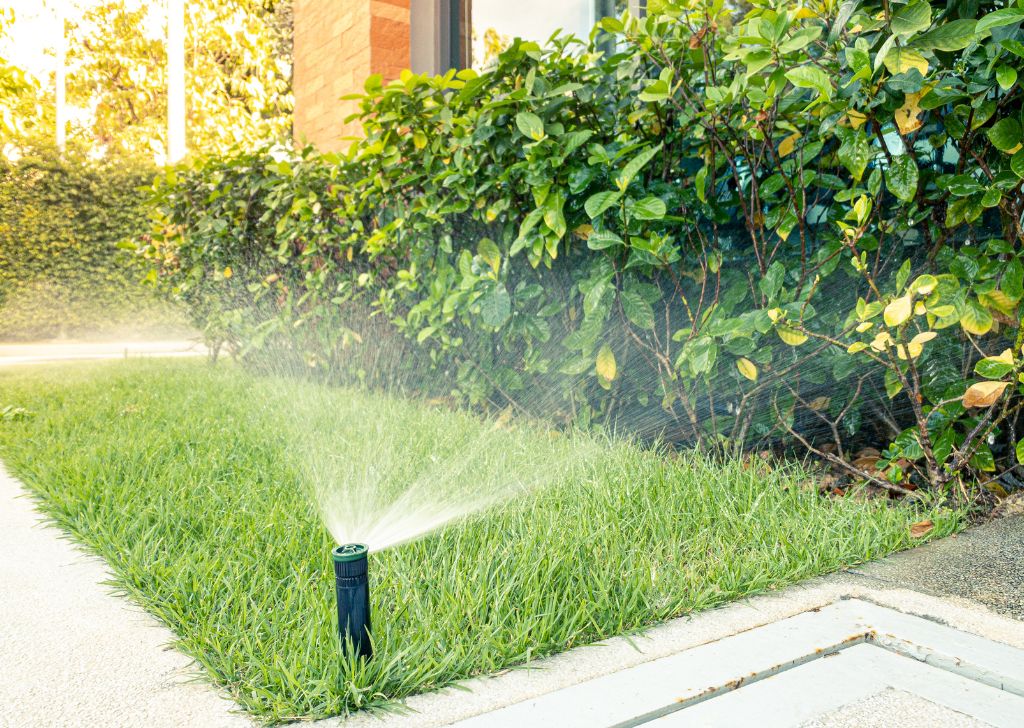As fall moves in and the temperature begins to drop there is a long to-do list to prepare our yards and homes for winter. But what are these tasks? And when is the best time to do them? Relax. Take a breath. We prepared all of this for you in our official TIA Fall Lawn Care & Home Maintenance Checklist. This list combines all of our favorite fall lawn care tips and our fall home maintenance checklist so your home is prepared for winter and also give you a jump-start on the spring season.
Yes, there’s a lot of tasks to check off this fall. Good thing we divided this list up by the fall months so you can breeze through this list instead of scrambling at the last minute.
Fall Lawn & Home Checklists
- September Lawn & Home Checklist
- October Lawn & Home Checklist
- November Lawn & Home Checklist
- BONUS TIPS
September Fall Lawn Care & Fall Home Maintenance Checklist
Here is our list of fall tasks to kick off your fall lawn and fall home maintenance. The first official day of fall is September 22 every year. However, feel free to start these tasks as soon as September begins so you can breeze through the month.
Here is a quick overview of our TIA September Fall Lawn Care & Fall Home Maintenance Checklist:
- Test Your Lawn’s Soil
- Aerate Your Lawn’s Soil
- Fertilize & Overseed Your Lawn
- Check Your Vehicle’s Fluid Levels
- Check Your Vehicle’s Battery
- Change Out & Clean Home Air Filters
- Check the Hardness of Your Home’s Water
- Check Your Home’s Furnace or Boiler
- Clean Your Grill
Keep reading to go into depth on each topic or jump to our TIA October Fall Checklist.
Test Your Lawn’s Soil
September is the perfect time to prepare your yard for spring, but before you do anything you should know the state of your soil. Testing your soil is an essential part of fall lawn care because you can find out exactly what your specific lawn needs to thrive next year.
A soil test will tell you about your lawn’s pH, nutrition levels, salt levels, and organic composition. Not sure how to test your soil? Get a soil testing kit from Amazon.
Aerate Your Lawn’s Soil
What is lawn aeration? Simply put, lawn aeration adds air back into compressed soil. That is why it’s ideal to aerate your lawn in the fall after it has spent the spring and summer season be walked on, played on, or pushed down by heavy outdoor power equipment (OPE). This constant compression causes your lawn to thin out and can cause it to die or create bare spots. September is also ideal to aerate your lawn because it is still an active growing season.
There are two types of lawn aeration tools: plug aerators and spike aerators. Feel free to ask your neighbor, gardening friend, or research online about what type of lawn aeration tool is best for you.
Fertilize & Overseed Your Lawn
You got your soil test back. You have aerated your lawn. Now it’s time to think about spring, and fertilize your lawn. Fertilize your soil based on whatever your lawn and soil is lacking or you want to improve.
You will also want to seed your lawn, and actually overseed, so that your lawn comes back next spring lush and thick. The main thing here is to consider seed type. It’s best to seed with the same grass variety you already have or a variety suited to your climate or maintenance abilities.
Check Your Vehicle’s Fluid Levels
Time to get out of the yard and into your garage. September is the perfect time to check and top off your vehicle’s fluid levels, especially if you live somewhere where the temperature drops below freezing.
The vehicle fluids to check are:
Depending on how much you drive, September can also be a good time to use fuel injection cleaner to get the best out of your vehicle’s mileage. I recommend using fuel injection quarterly, but every 1,000-3,000 miles may be better for avid drivers.
Check Your Vehicle Battery
Your vehicle’s battery is another essential fall home maintenance task because you want to check your battery’s life now while the weather is still warm. An older or damaged battery may work fine now, but once the temperature drops below zero you may find your vehicle unable to start. This is particularly distressing if you are in a hurry, away from home, or during an emergency.
The average life of a car battery is 3-5 years. However, anything that drain’s your battery can lead to a short battery life, such as:
- Leaving your vehicle’s lights on
- Leaving a door open or radio on
- Exposure to extreme cold
- Not running a vehicle for an extended period of time
How to Check Your Vehicle’s Battery Life
- Inspect battery for damage, such as a bloated battery case or a rotten egg smell.
- Check voltage meter is between 12 and 14 on startup. Batteries with voltage under 12 may need to be charged or ready to replace.
- Listen/count how long it takes for your engine to turnover during startup. A dying battery can have a longer startup.
- Check headlight brightness. Dimmed headlights can indicate low battery life.
- Use a battery tester.
A dying vehicle battery may also cause your vehicle’s check engine light to go on.
Change Out Your Home’s Air Filter
Regularly changing out your home air filter is one of the easiest ways to maintain the air quality in your home. Your home’s air filter is usually located at the in-take of your home’s furnace, but depending on your system they can also be located in your air return duct, in air handler cabinet, or even in your window AC cabinet. It all depends on your home heating and cooling system. The Home Depot has a great article: How to Change a Home Air Filter.
Air filters should be changed quarterly, monthly if you have pets in your home. However, fall and winter are vital times to prioritize air quality as the dry air can cause more lung irritation.
You can also invest in a home air purifier if you are really concerned about your home’s air quality.
Check Your Home’s Water for Hardness
Hard water can wreak havoc on our pipes, and appliances, negatively impact the taste of our home’s water, and damage our skin and hair – which can be compounded by dry fall and winter air. Test your home’s water for hardness to determine if there are issues with your water softener or if you need to invest in a system.
How to Check Hardness of Home’s water
You can buy a hard water home testing kit, or you can conduct the Quick Soap Suds Water Bottle Test by Spring Well Water Filtration Systems:
“One of the easiest and quickest options for a hard water test is the Soapsuds Test. To carry out this test, you need a clear, clean, empty glass or plastic bottle with a tight-fitting cap. Fill the bottle about one-third with water straight from your tap, add a few drops of pure liquid soap and shake vigorously for about 15 seconds. Next, set the bottle down and observe the solution.
If there are no fluffy bubbles in the water or it appears cloudy and/or milky, your water is hard. Soft water would foam up quickly and create bubbles, and the resting water at the bottom would be clear. You have to keep in mind, however, that some soaps are formulated with detergents, so they lather regardless of your water type. For the best results, use a basic soap, such as Castile. Soaps like this one have no dyes, detergents or perfumes.”
Make Sure Your Furnace or Boiler are Working
If your furnace or boiler aren’t working properly you will want to find out now before the temperature really drops. First, you will be more comfortable because you can fix the problem while your home is still at a comfortable temperature. Second, you should have an easier time getting a repair person to your home.
7 Ways to Check if Your Home Furnace is Working
Here is quick checklist for checking if your home furnace is working from Superior Mechanical Services.
- Check electric controls
- Inspect and clean burner
- Examine heat exchanger
- Test ignition system
- Check exhaust system
- Check gas pressure
- Test gas and oil connections
How to Check Your Home’s Boiler System
Frederick Air has a great step-by-step checklist for checking your home’s boiler system. We recommend following the steps on the website, but the steps can be broken down into three main steps.
- Test your boiler thermostat
- Check boiler pipes for heat distribution
- Check radiators and heat vents for heat distribution
Clean Your Grill
No, you don’t have to stop grilling just because the temperature is dropping. Eric personally believe in grilling outside in his shorts all year long. However, September is the perfect time to give your grill an end of season spa day. This is a thorough clean that can help extend the life of your grill.
Here’s our quick fall checklist for cleaning your grill:
- Remove grill grates, knock loose any food particles and vacuum inside, outside, and underside of grill.
- Soak grill grates in warm soapy water, clean and rinse. Scrub if necessary to remove built-up food particles.
- Scrub the interior of your grill with warm soapy water and rinse.
- Clean the exterior of your grill with warm soapy water and rinse.
- Empty and rinse your grill’s ash tray.
- Dry your grill with a microfiber.
- Heat the grill and oil the grates with a greased paper towel to remove leftover food and grease the grates.
October Fall Lawn Care & Fall Home Maintenance Checklist
Alright, you have checked off all of your September fall maintenance task for your lawn and home and it’s onto October. October temps are lower, the air is dryer, and the growing season starts to slow down. A lot of your October fall lawn and home maintenance revolves around keeping your home comfortable, treating the items most impacted by cold temps, and how to properly store items away until spring.
Here is a quick overview of our TIA September Fall Lawn Care & Fall Home Maintenance Checklist:
- Rake Leaves
- Treat Fall Weeds
- Check Your Vehicle’s Tire Pressure (spare tires too)
- Change Windshield Wiper Blades
- Setup Humidifiers
- Change Your Ceiling Fan Direction
- Flush Hot Water Heater
- Clean Chimney
Keep reading to go into depth on each topic or jump to our TIA November Fall Checklist.
Rake Fall Leaves
Okay, now this task likely isn’t a one and done activity, but raking fall leaves is a standard fall lawn care task.
Some people do like to argue that fall leaves can make a great fertilizer. However, unraked leaves can lead to bare spots in your grass. Personally, I think mulching your fall leaves after you rake them is the best of both worlds.
Treat Fall Weeds
The time of year provides different ways of treating weeds. Fall is actually the perfect time to perform “post-emergent” and “pre-emergent” lawn treatment for weeds. A favorite fall lawn care product is “weed and feed“, which is a weed killer and fertilizer combo.
Check Your Vehicle’s Tire Pressure – spare tires too!
Did you know that the cold can impact your tire pressure? While it’s good to regularly check your tire pressure year-round, it’s especially important to check it after big shifts in temperatures. This includes when the weather warms spring or after a dreaded winter “polar vortex”. It’s also good to check the air in your spare tires so you know that they are good to go when you need them most.
All you need to check your vehicle’s tire pressure is a tire pressure gauge. Most passenger cars should have a pounds per square inch (PSI) of 30-35 PSI. However, often you can find your vehicle’s recommended PSI on a sticker located inside the driver side door.
Change Windshield Wiper Blades
Fall is a great time to change your windshield wiper blades. It is recommended to change these every 12 months, in some instances every six months. However, fall is an ideal time to change because the blades have likely taken a beating from spring and summer rains, and it’s good to have a fresh pair before dealing with winter sleet and snow.
We also recommend inspecting your windshield wiper blades in the spring. You may not need to replace them, but it may be worthwhile if you live anywhere with extreme winter weather. Look for damage such tears or cracks in the rubber.
Setup Humidifiers
Setting up our humidifiers is a fall home maintenance must in my home! I personally just hate dry air, and one of my kids has asthma and is prone to flair ups in the winter.
For humidifiers you have two main options: small in-home humidifiers in individual rooms of your home, or a whole house humidifier. Or you can do a mix of both. A whole house humidifier requires minimal maintenance. Individual humidifiers require near daily maintenance of each humidifier. However, I prefer these types of humidifiers in at least all of my home’s bedrooms.
Remember to fill your humidifiers with distilled water only to prevent build-up or fogginess.
It’s also good to clean your humidifier regularly. A lot of manufacturers recommend cleaning every three days. I prefer to just look for build-up and mode when refilling and clean as needed.
Change Your Ceiling Fan Direction
This is probably the easiest item of your fall home maintenance checklist. Each ceiling fan should have two settings. One for cooling down and one for heating up a space by controlling the air’s circulation. Switching between the two settings couldn’t be easier.
First, make sure the ceiling fan is turned off and the blades aren’t spinning (also a good opportunity to clean the ceiling fan blades and glass). Then look for a switch. This is what most ceiling fans utilize to control the settings and the switch can be moved up and down. Generally, you set the switch down in the summer to “cool down” a space, and switch it up in the winter to “warm up” a space. In this instance, you’ll want to switch the ceiling fan from cool down to warm up.
That’s it!
Flush Hot Water Heater
Sediment can settle in your hot water heater which can cause corrosion, ineffective heating, and overall shorten the life of your hot water heater. Prevent these issues by flushing your hot water heater.
How do you flush your hot water heater? Follow this 7 step guide by Yes Plumbing.
It’s recommended to flush your hot water heater at least once a year. However, you may need to do this more if you live somewhere with hard water, or have older pipes (but maybe it’s just time to replace your pipes)
Clean Chimney
Nothing says fall home like relaxing in front of a warm fire. However, all types of fireplaces should be cleaned regularly to reduce the risk of fire or carbon monoxide related accidents. With woodburning fireplaces you want to prevent the buildup of creosote. Regularly cleaning a gas and electric fireplace ensures the valves work correctly.
The Home Depot has great step-by-step guides for cleaning all types of fireplaces.
How often should you clean your fireplace? At least once a year. More if you use your fireplace regularly throughout the fall and winter.
November Fall Lawn Care & Fall Home Maintenance Checklist
In November we start to experience the lowest temps and sometimes even snow. The holiday season also kicks off in November, which creates a sense of urgency. Fortunately, our November fall maintenance checklist is short and sweet.
- Winterize Your Summer OPE
- Winterize Irrigation System
- Clean Gutters & Downspouts
- Vacuum Your Refrigerator Coils
Keep reading to go into depth on each topic or jump to our Fall Bonus Tips.
Winterize Lawn Mower & Summer OPE
Lawn mowers and other gas OPE that you won’t use in the winter need to be winterized to ensure these tools perform when you need them again in the spring.
The simplest way to winterize your lawn mower and gas OPE is to run them until empty. You can also manually empty them. Whichever method you choose, it’s best to not let gas sit. In fact, dispose of any leftover gas you have. You’ll want to fill your spring and summer OPE with fresh gas when they come out of hibernation.
Don’t have gas OPE? There are still steps you should take each fall to protect your summer OPE for next season, but it’s much simpler. Simply store your OPE batteries away from extreme cold to get the most life out of them.
Winterize Irrigation System
Don’t damage your hoses or sprinklers by forgetting to drain the water out of them before temps drop below freezing. Fully winterize the system by turning off the water supply and then running the system empty.
Clean Gutters & Downspouts
Cleaning your gutters and downspouts is an important task on your fall home maintenance checklist. Gutters and downspouts that are clogged with leaves and debris prevent water from draining, which can lead to roof damage.
Do you hate cleaning your gutters and downspouts? Invest in a gutter guard system.
Vacuum Your Refrigerator Coils
I bet you forgot about this list item. This is actually a great thing to do before you host any guests this holiday season. Use a crevice attachment to vacuum up the debris surrounding your refrigerator coils. You can also take it a step further and pull your fridge out from the wall and vacuum all around it.
WARNING: You may want to clean again after all your holiday baking.
How to Embrace the Fall Season Checklist
Congratulations! Your lawn and home are ready for fall and winter, but are you prepared for the cold months ahead? These months can be hard on many people, especially those who prefer summer months and countdown the days until spring. My suggestion? Lean in to the fall and winter seasons to make this time more enjoyable.
Here is our TIA Fall Home Bonus Tips for enjoying the cold months ahead.
Decorate for Fall
For some people decorating for fall is decorating for Halloween, Thanksgiving, and some even pull the Christmas tree out as soon as school starts. However, this can be as simple adding pops of fall colors into your home.
I personally like decorating with warm tones like yellow, orange, and red and mix them with lighter neutral tones to combat the darker days ahead. I add these colors in with new pillow covers, blankets, and curtains – which creates a perfect opportunity to clean your spring and summer decor.
I also like to light seasonal candles. Spiced scents such as cinnamon are popular in the fall. I personally prefer brighter scents like cranberry and orange to give me energy over the darker, sleepier months.
Prepare for the Cold Months Ahead
Buy a new blanket, or a new hat and scarf. Refuse to give up your time outside? Get the outdoor space heater or finally build the firepit so you don’t have to give up your time outside.
As I see it, we can either complain about the cold, or we can make ourselves comfortable and enjoy this time of year.
Warm Yourself from the Inside
You don’t have to like pumpkin spice lattes to enjoy the fall season – I don’t! However, I do enjoy sipping a hot coffee in the morning and indulging in a hot chocolate in the evening.
If a warm fancy drink is something you look forward to then continue visiting your favorite barista, or finally get that espresso machine you have been eyeing, or buy yourself a new teapot. Or just get yourself a new mug or tumbler to enjoy your hot drinks on the go.
Embrace Your Favorite Fall Activities
Go apple picking. Go to the pumpkin patch. Make your favorite fall foods. Or just read a book while wrapped up in a blanket. Pick the best things about this time of year, even if it’s one single thing and lean into that make this time of year something to enjoy.
Did we miss anything? Tell us what you do every fall to prepare for the cold months ahead.

